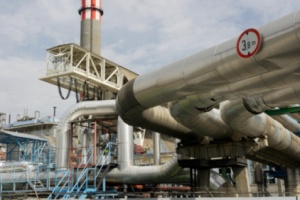 Organizations opposed to the Keystone XL pipeline are pointing to a September oil spill that leaked 865,000 gallons of oil (at least 20,600 barrels) across seven acres a North Dakota farm as an example of what a spill of the same magnitude would mean for landowners along the Keystone XL tar sands pipeline route.
Organizations opposed to the Keystone XL pipeline are pointing to a September oil spill that leaked 865,000 gallons of oil (at least 20,600 barrels) across seven acres a North Dakota farm as an example of what a spill of the same magnitude would mean for landowners along the Keystone XL tar sands pipeline route.
“The spill on Steven Jensen’s farm is devastating,” said Bold Nebraska Executive Director Jane Kleeb. “It will ruin his livelihood, to say nothing of the health risks. Now imagine if that spill were tar sands and it had occurred over the Ogallala Aquifer, which provides fresh water to millions of Americans. The North Dakota spill was bad enough. A tar sands spill on the Ogallala would be even worse.”
"Not in our national interest"
“Pipelines spill. It’s not a question of if, but when,” said All Risk, No Reward Chairman and Nebraska landowner Randy Thompson. “No landowner should have to take on that risk, especially for an export pipeline that is not in our national interest. We’re simply asking the President to side with American landowners rather than a foreign corporation that's willing to put our citizens and our environment at risk for their own profit.”
Opponents of the pipeline say that numerous spills in recent years have demonstrated the many faults of oil companies’ leak detection systems. In the most recent spill as well as a tar sands spill in Arkansas in the past year, citizens detected the oil and alerted authorities before any leak detection technology noted the anomaly.
A 5 percent detection rate
Inside Climate News reported that, “Between 2002 and July 2012, remote sensors detected only 5 percent of the nation’s pipeline spills, according to data from the Pipeline and Hazardous Materials Safety Administration (PHMSA).”
“Keystone XL will use a SCADA leak detection system that is only capable of detecting leaks between 1.5 – 2 percent of the pipeline flow rate, according to a statement by Bold Nebraska. “This means spills smaller than 12,450 barrels per day are unlikely to be detected in real time—and the burden would likely fall to the landowner.”
Sandy soil
While a natural 40 foot layer of clay underneath the North Dakota spill site helped keep the oil from spreading, the soil atop the aquifer in Nebraska is sandy and could spread the spill and leak it into the water.
Dr. John Stansbury, a Professor of Environmental and Water Resources Engineering at the University of Nebraska, released a report that the Keystone XL tar sands pipeline would result in 91 major spills over the 50 year life of the pipeline.
“The 2010 Kalamazoo River spill revealed that tar sands oil sinks to the bottom of bodies of water, making it much harder to clean up, according to the group, which says that the Kalamazoo cleanup effort has already cost over $820 million, and could top $1 billion.
The EPA found that the State Department's Draft Supplemental Environmental Impact Statement did not adequately address the risks of spills and leaks, especially ones that occur atop the aquifer.
“The State Department’s SEIS failed to consider TransCanada’s poor operating history, including that their first Keystone pipeline leaked 14 times in the United States and 21 times in Canada during its first year of operation,” said Bold Nebraska.


